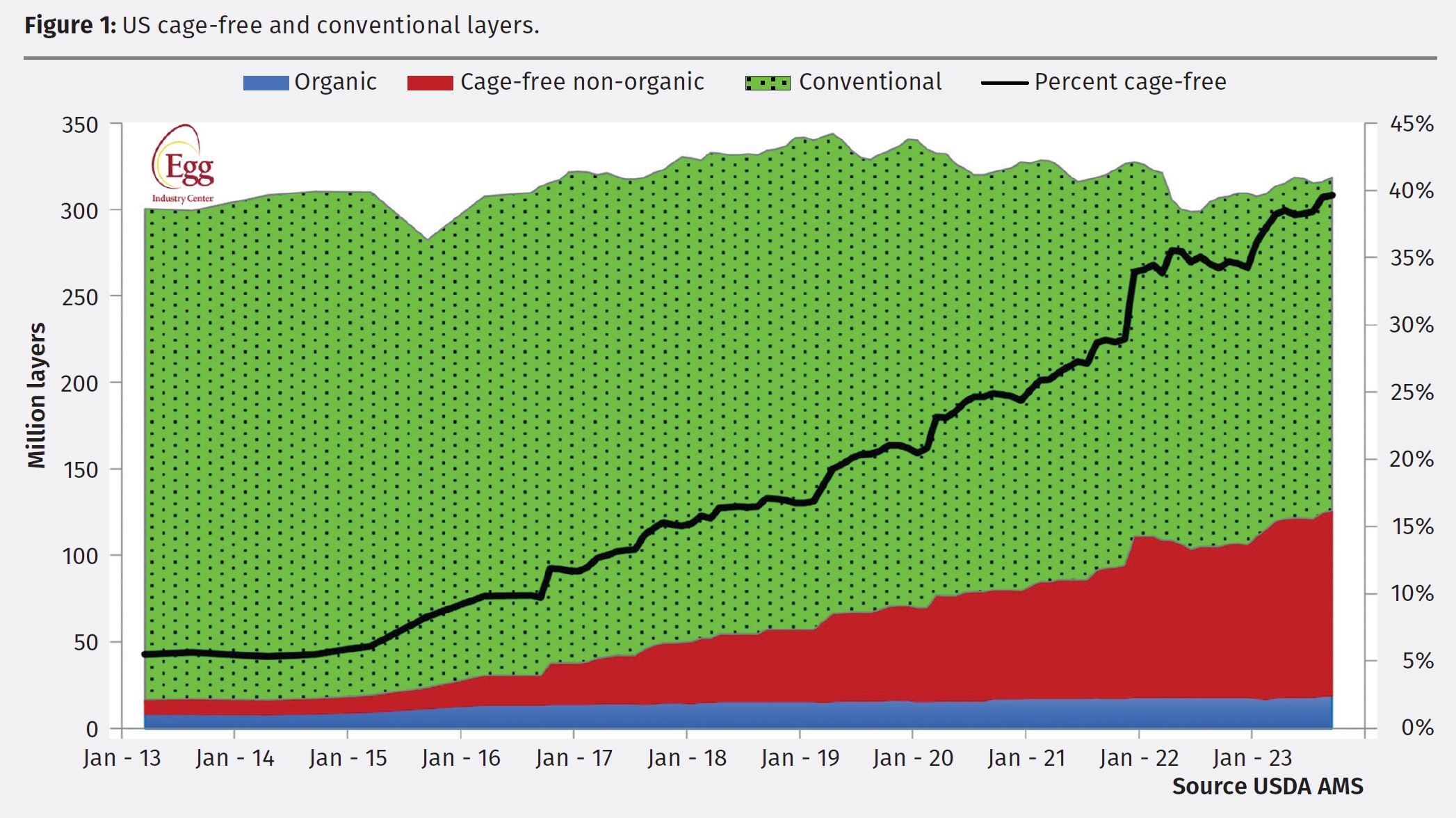



Egg production challenges in the US
The shift toward niche markets has created a surge of disease challengesEditor's note: the following contains excerpts of a paper by Jessica Higgins, DVM, Kalmbach Poultry LLC, Ohio, presented at the 2024 conference of the American Association of Swine Veterinarians. Dr Higgins presented a cross-species comparison of disease elimination approaches.
The poultry industry has made significant adjustments to the moving customer demands over the last decade, which has pivoted its approach to disease elimination. Medication has become a less utilized tool instead, there has been a shift toward certification programs, management adjustments and vaccination programs to address poultry disease challenges.
From the 1920s up to the 1960s, most of the egg layer industry consisted of small farms with backyard flocks. These flocks produced eggs for that specific farm family and the excess was sold locally in small towns and cities. By the 1960s, it was more common to see 10,000 – 20,000 bird flocks with eggs still being handled manually. Off-site service trucks would then pick up the eggs to be transported to a separate packing and distribution location.
In the 1970s and 1980s, advancements in technology allowed for egg handling to be more automated, and the industry consolidated. Large, inline egg grading complexes became the obvious profit choice for the industry, which required larger flocks and farms to maximize efficiency and profitability.
The egg industry experienced a swing in the last 10 to 15 years due to consumer and activist pressure for more cage-free, antibiotic-free and organic egg production options from smaller and family-owned farms. This created an interesting paradigm change for the egg industry, moving from a more industrialized way of raising poultry in an indoor setting with caged birds.
The recent consumer pressure requesting a more ‘wholesome’ and natural product has pushed a significant portion of the industry to move back to smaller flock sizes with outdoor access, including pasture access in many settings, no antibiotics, or organic standards for the flocks.

‘Old’ diseases
The shift in the poultry industry toward niche markets focused on antibiotic-free flocks with outdoor access created a surge of disease challenges over the last decade that had not been seen due to differences in rearing approaches. Many of these challenges were known as ‘old’ diseases from the poultry industry, which were eliminated from flocks as the trend for indoor-only, caged egg production became popular after the 1970’s and 1980’s. The move toward customer requests for smaller flocks with access to the outdoors in open group settings created the ideal environment for these ‘old’ diseases to reoccur within the industry.
Diseases like erysipelas, fowl cholera (Pasteurella multocida), Egg Drop Syndrome, and infectious coryza, have reappeared at a significantly increasing rate in recent years. Customer and activist pressure for increased use of cage-free flocks is expected to continue in the coming years, which means that those disease challenges are also expected to remain a concern.
Disease prevention strategies
The limited utilization of medication in the poultry industry due to regulatory restrictions and customer pressures have led toward a more preventative approach. Vaccination for diseases have become a cornerstone to good layer flock health with the average layer pullet receiving over 15 vaccinations by 16 weeks of age.
These layer pullets are hatched with expected maternal antibodies from their breeder flock that will protect them against multiple diseases for the first weeks of life. It is becoming a more common practice for chick maternal antibodies to be routinely monitored via serological surveys every few years.
The decaying trend in maternal antibody protection is evaluated via serological cross-sectional or time-series surveys for multiple diseases to determine ideal vaccination timing and difference between breeds and varieties. These same serologic approaches are routinely utilized by production companies to understand vaccine administration compliance.
Advancements in technology have allowed for poultry vaccination strategies to be further fine-tuned with the use of molecular techniques to check vaccine administration compliance via polymerase chain reaction (PCR) testing.
Also, whole genome sequencing techniques have allowed for more extensive isolate comparisons for better vaccine selection. The advancements being utilized within the poultry industry have allowed for more focused activation of the immune system, which results in more rapid disease protection and elimination.









